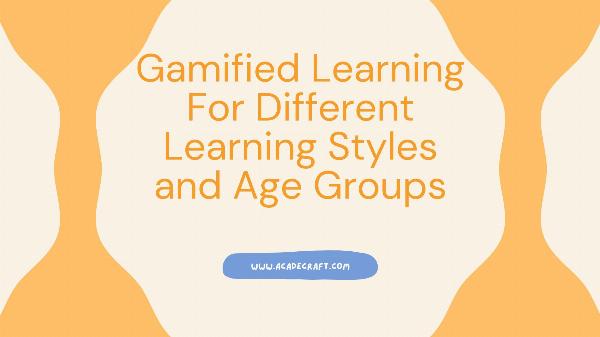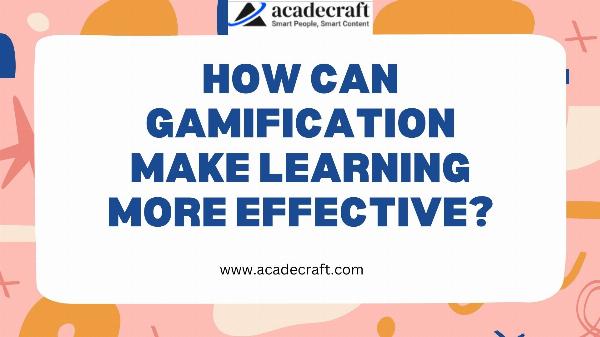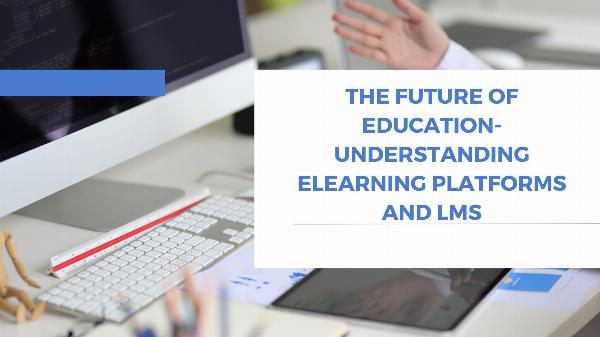Gamified Learning For Different Learning Styles and Age Groups

Strong8k brings an ultra-HD IPTV experience to your living room and your pocket.
Gone are those days when learning meant the same old traditional way! Today, the concept of learning and education is going through a sea of changes. Gamified learning is one such branch and can cater to various individuals with unique learning styles and age groups.
Gamified learning solutions are the new norm and it is a transformative approach with amazing powers. By making learning engaging and interactive, gamified learning caters to various learning styles and age groups. Professional gamification companies can enhance the experience more and help you with personalization as well.
Gamified Learning For Diverse Learning Styles
To ensure that gamification can cater to different learning styles and age groups, one of the best options is custom gamified learning. What does it mean? You can alter the entire experience instead of choosing any standardized options.
Every individual has unique learning styles. While some people can grasp visual information better, others retain auditory information better.
1. Visual Learning
Visual learning caters to those individuals who can retain information when they are visually represented. Educational games can be integrated into visual learning with the help of vibrant charts, graphs, and animations.
Educational games often include visual storytelling, which helps in better retention and understanding. To enhance the efficacy of visual learning, it is also possible to integrate elements like puzzles.
2. Auditory Learning
For those learners who are able to learn better from auditory information, gamified learning experiences could be customized. Gamified learning addresses this by incorporating audio instructions, dialogues, and feedback.
Gamification to cater to auditory learners can also include interaction-based games. Here, listeners need to listen to the narration so that they can actively engage. This active engagement boosts learning and ensures that learning is more memorable for the learners.
3. Critical Thinkers
And finally, there is a variant of learners who are not able to learn anything if you ask them to focus on rote learning memory. In such cases, it is always important to make sure that they can apply critical thinking skills.
Gamification can be done in a way where the simulated environment requires the players to use their critical thinking skills. This could be in the form of puzzles, challenges, and even quizzes that require problem-solving skills. Usually, this kind of gamification engages the learners and allows them to retain what they have learned for longer.
Gamified Learning For Diverse Age Groups
Gamified learning solutions also efficiently cater to learners from various age groups. How?
1. Young Learners
Young learners are usually those who are in their developmental phase. This is the time when they have very short attention span and need engaging learning methods.
Gamification helps one to instill that spark of interest which can attract them towards learning and education. This could be in the form of quizzes, puzzles, or even storybooks with questions and answers at the end.
2. Elementary Learners
This is the time when most of the kids are all set to join school or have already joined elementary school. Hence, they are introduced to the preliminary concepts of learning, such as ABC and 123. Gamified learning in such a stage helps to build their base.
Gamification can include various subjects like English, math, and science. Usually, gamification allows students to learn the basics very easily and with better retention.
3. Middle And High School Learners
Middle and high school learners need gamified learning solutions the most. This is because they are overburdened with studies and often find the subjects extremely boring. Middle and high school is also a time when they are exposed to too much knowledge, and retention becomes a major issue.
Gamified learning solutions ensure that students have a fun approach to learning. It could also inculcate a sense of positive competition between the players.
4. Higher Education Learners
Finally, even those opting in for higher education can greatly benefit from gamified learning. Adults tend to have a lot to learn but in a very short period. In such cases, gamification can be a great option.
Professional development courses, language learning, and training programs can benefit from gamified elements. This could also cover topics in the form of case studies, leaderboards, and similar others.
Conclusion
With the help of custom gamified learning, you can cater to learners very easily and ensure their retention is better. It helps one to keep students motivated for a longer period. Choosing professional options in such cases is the best decision as they can personalize the educational games accordingly. Embracing such modern technologies allows educators to make education a more fun and engaging process.
Key Takeaways:
Gamified learning is transforming traditional education by making it engaging and interactive.
It caters to various learning styles: visual, auditory, and critical thinking.
Visual learners benefit from vibrant charts, graphs, and animations.
Auditory learners gain from audio instructions, dialogues, and interactive storytelling.
Critical thinkers thrive on simulations, puzzles, and problem-solving challenges.
Young learners are engaged through quizzes, puzzles, and storybooks.
Elementary learners build foundational skills in subjects like math and English.
Middle and high school learners benefit from fun, competitive learning approaches.
Higher education learners find gamified learning effective for quick, practical learning.
Custom gamified learning solutions provide personalized, engaging educational experiences.
Note: IndiBlogHub features both user-submitted and editorial content. We do not verify third-party contributions. Read our Disclaimer and Privacy Policyfor details.







